By Amanda Rose Newton
Looking for a relaxing, low-maintenance way to garden this summer? Consider water-gardening — an often-overlooked option that thrives in our hot Central Florida climate. Whether you have space for a small patio container or want to transform part of your yard into a tranquil pond, water gardens bring beauty, wildlife, and even a little cooling magic to your outdoor space.
If you’ve never thought about owning a water garden before, here’s why summer is the perfect time to start — plus some tips on night-blooming plants, fertilizing, and design basics.
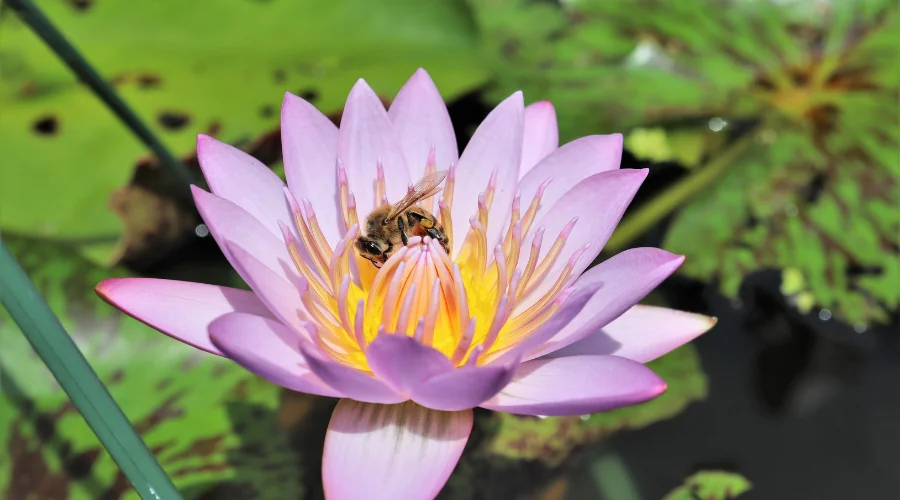
Popular Night-Blooming Water Plants:
Night-bloomers are perfect if you enjoy your garden in the evening or early morning. These plants are fragrant, glowing, and especially beautiful under moonlight:
Tropical Night-Blooming Water Lilies (Nymphaea spp.)
- Cultivars like ‘Red Flare,’ ‘Missouri,’ and ‘Trudy Slocum’ open around dusk and close mid-morning
- Fragrant and dramatic, with star-shaped blooms in white, red, or purple
- Require warm water and love full sun during the day
Night-Blooming Jasmine (Cestrum nocturnum)
- Not aquatic, but commonly planted near ponds for their intoxicating evening scent
- Can be container-grown and placed around water features for nighttime ambiance
Lotus (Nelumbo nucifera)
- While most lotus varieties bloom in daytime, some open just after dusk
- Look for tropical varieties and check the label if you’re seeking night bloomers
- Their large leaves and dramatic flowers are showstoppers in larger ponds
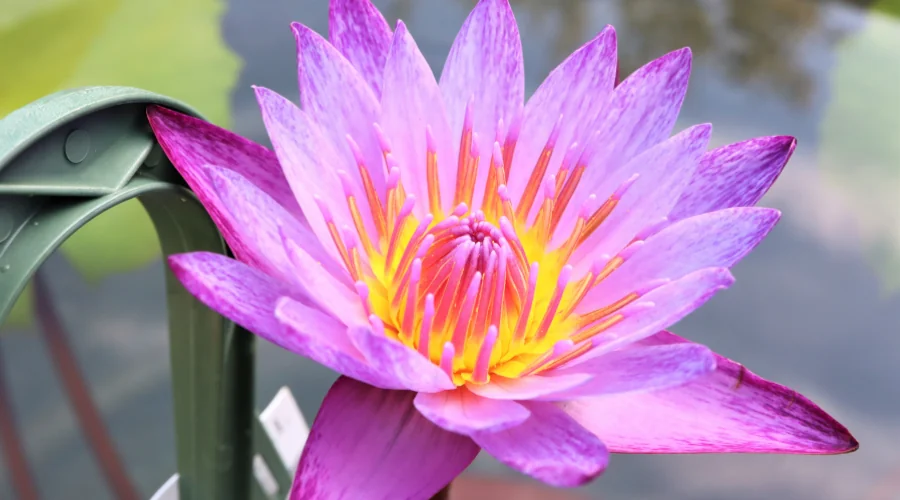
Other Common Water Plants
Whether you’re shopping for a backyard pond or a container water garden, here are water-garden favorites you’re likely to find available:
Floating Plants
Water Lettuce (Pistia stratiotes)
- Rosette of fuzzy green leaves that float on the surface
- Shade the water to reduce algae and provide shelter for fish
Water Hyacinth (Eichhornia crassipes)
- Lavenders spikes of flowers and glossy leaves
- Fast-growing and great for filtration
Salvinia (Floating Fern)
- Small, velvety leaf clusters with trailing roots
- Great for small ponds and wildlife-friendly setups
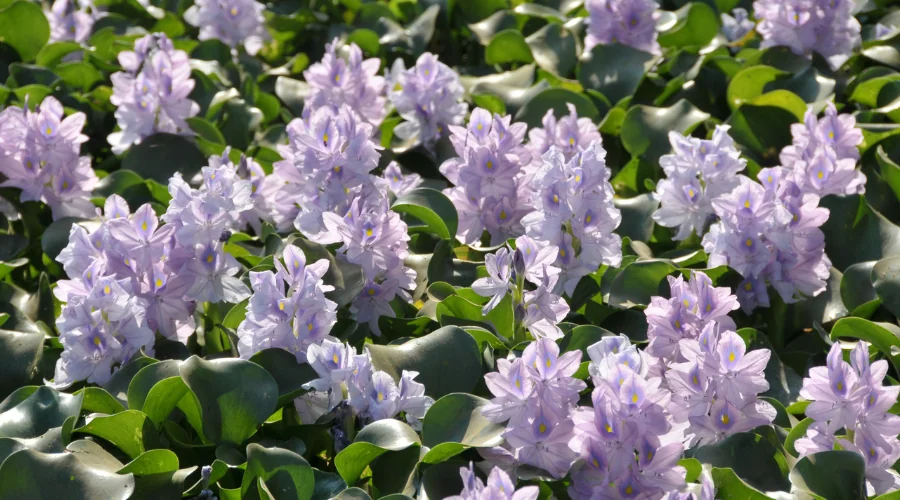
Marginal Plants (Grow in shallow water or pond edges)
Pickerelweed (Pontederia cordata)
- Tall spikes of blue flowers that attract pollinators
- Native and ideal for Florida wet zones
Taro/Elephant Ear (Colocasia spp.)
- Bold foliage in green, black, or speckled varieties
- Adds tropical flair and height to pond edge
Canna Lily (Water Canna)
‣ Tall stalks with red, orange, or yellow blooms
‣ Variegated leaf varieties available
Thalia (Hardy Water Canna)
‣ Unique purple flower spikes and tall blue-green leaves
‣ Great for architectural interest
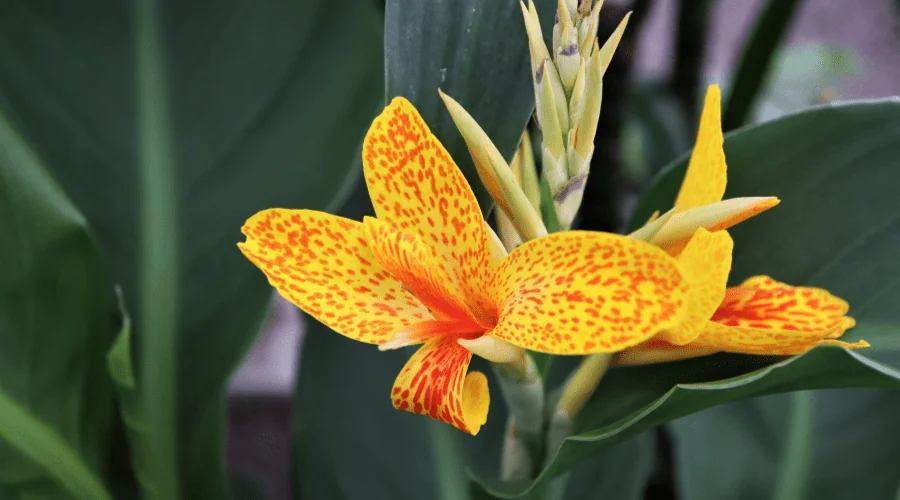
Submerged/Oxygenating Plants
Anacharis (Elodea)
- Grows entirely underwater, helping to keep water clean and oxygen-rich
- Safe for fish and helps reduce algae growth
Hornwort (Ceratophyllum demersum)
- Feathery, rootless plant that floats or sinks
- Popular in goldfish and koi ponds
Parrot’s Feather (Myriophyllum aquaticum)
- Lacy foliage that can trail over edges or float on the surface
- Adds texture and helps prevent algae
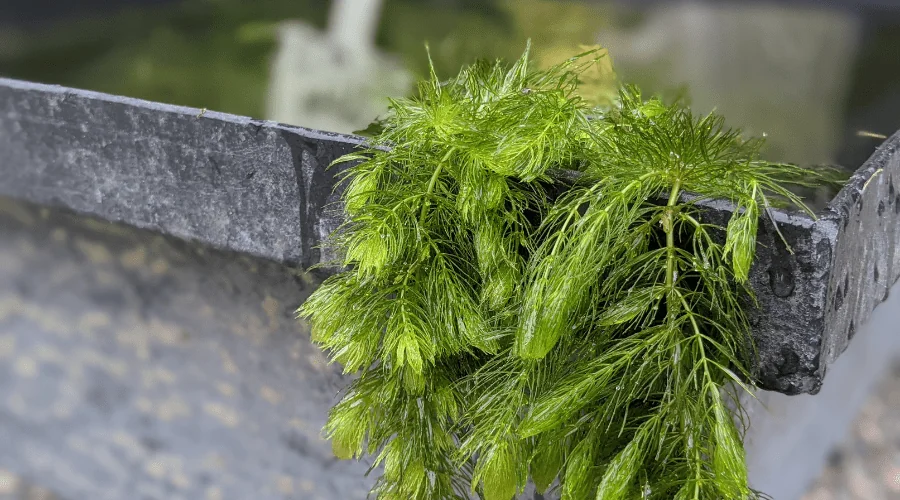
Big Pond or Small Pot? Start Where You Are
You don’t need a fancy setup to enjoy water-gardening. It can be as simple or as elaborate as you like.
Container Water Gardens
- Great for patios, balconies, or shady porches
- Use a wide, shallow watertight container (ceramic pots, tubs, barrels)
- Add floaters, miniature lilies, or even a dwarf lotus
- Use a small pump or fountain attachment for movement and sound
In-Ground Ponds
- Can be custom-dug or lined with preformed shells
- Add plants at different water depths (marginal, floating, submerged)
- Consider filtration and aeration to keep the ecosystem balanced
- You can include fish, but they aren’t required to enjoy a thriving pond
Feeding and Maintenance Tips
- Use slow-release aquatic plant tabs, pressing them into the planting media monthly
- Trim back yellowing leaves and spent flowers to keep water clear
- Avoid chemical fertilizers — they can feed algae or harm fish
- Add mosquito dunks if your water is still — they’re safe for pets, fish, and people
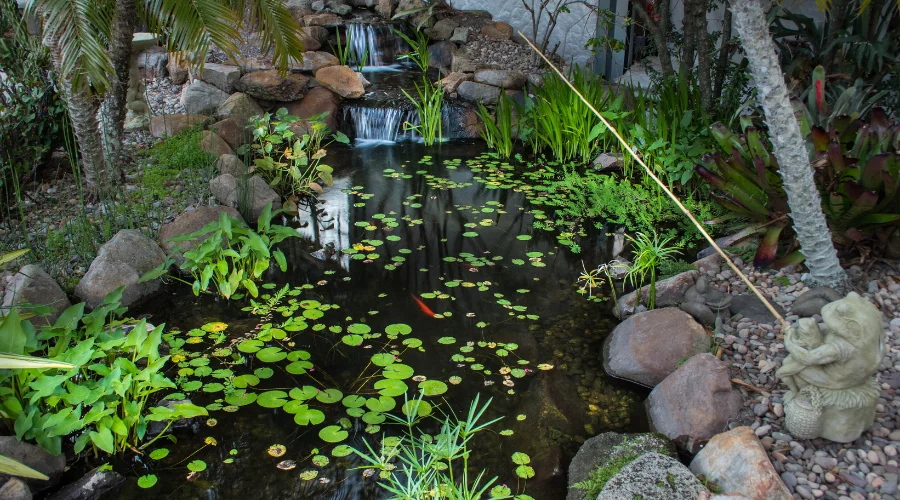
Why Try Water-Gardening This Summer?
- Low weeding, high reward, less maintenance than beds or borders
- Cools down your space with humidity and soothing sounds
- Attracts pollinators and beneficial insects
- Provides a unique way to connect with plants, especially in the heat of summer
- Great for gardeners with limited mobility, since most maintenance is done from the edge
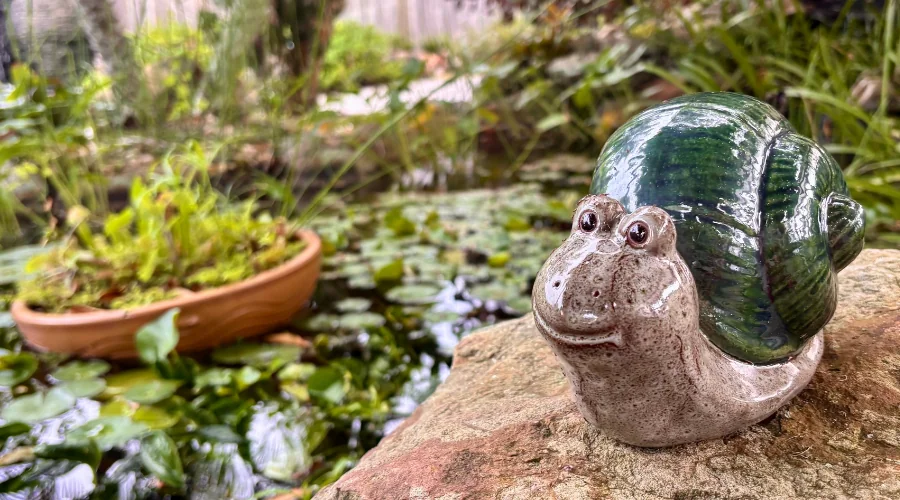
Water gardening might not be your first instinct in Florida’s sweltering summer but it’s one of the most rewarding and climate-resilient ways to garden here. Whether you’re drawn in by the glow of night-blooming lilies, the texture of floating foliage, or the quiet ripple of a mini fountain, there’s a water garden for every space and skill level.


